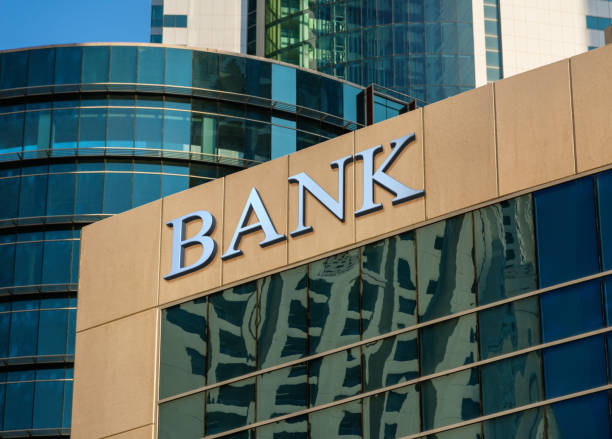Financial software companies, or fintech, are biting off bigger and bigger pieces of the banking industry. Customers are steadily replacing traditional bank services for more engaging fintech solutions. Statistics prove that point.
More than 7 in 10 customers are inclined to fintechs’ seamless and cost-effective services, according to Capgemini. Meanwhile, nearly half of the respondents state that their banking relationships were neither rewarding (49%) nor emotionally connected (48%). Considering these facts, you might be inspired to redouble your efforts on improving your banking software or some of your services. However, we encourage you to think bigger.
PWC states that a third of banking and payment services will be at risk of disruption because of new business models brought by fintech. What conclusion can be drawn from that?
To respond to the fintech movement, banks must invest in structural changes, expanding the use of technologies throughout the entire organization. We’ve created a simple 3-stage guide for you to follow. It comprises the forces that are raising the core banking profile and helping redraw customers’ attention. They include transaction speed, customer engagement, and security. To each point, we will include technical suggestions that will optimize your efforts.
Transaction speed
Agility is the quality that attracts customers to fintech in the first order. For banks, this is the reason to question their operational efficiency. Basically, it starts with technology infrastructure. We will take a closer look at what can be improved on a larger and smaller scale.
Core banking software
The inefficiency might be detected in different banking systems. Software that interfaces with tens or hundreds of systems (or the core banking software) should be the first to be assessed. Every bank has an individual approach to the management of the system, so we will illustrate the best practices.
To ensure the velocity of transactions, some of the major global banks are transferring their core capabilities to the cloud. Taking this step, they additionally improve the scalability of IT infrastructure, so they can faster execute M&A. At the same time, this is not the unique benefit of cloud adoption.
Financial institutions choose public clouds to support in-house banking software development. Seeking to build the best banking software from the technical perspective, they harness external capabilities in the latest technologies like AI, blockchain, and software containers. But is it secure?
Even if there are prejudices around the insecurity of third-party solutions, international experience confirms that core banking software vendors deliver quality support and maintenance.
Smart contract

Another thing that makes customer experience more agile is smart contract technology. Banks introduce this type of blockchain-powered solutions to automate and accelerate transactions. If a bank lacks expertise in blockchain, a smart contract development company can assist. Let’s figure out how this technology generally works.
Smart contracts operate on pre-programmed terms to automatically govern transactions between two organizations. A smart contract verifies transactions and calls for the completion of action outside the distributed ledger, such as asking a bank to complete a transfer.
The solution automatically refers to information from external data sources, which makes it self-verifying. As a result, smart contracts enable fast verification, saving both parties time.
Customer engagement
Often frontline bank employees and even executives have a hazy understanding of what intricate financial software solutions will serve for. If that is the case, new technologies will bring poor results. To adjust the direction, look at the example of leading financial institutions like Regent Bank or Ikano Bank.
They don’t just introduce new banking system software, but also reshape the whole business model in order to become more customer-centric. That means delivering a more flexible journey for clients. As a consequence, they produce more personalized products. What technologies can help you move in this direction?
Banking CRM software
A CRM system can help you make friends with your clients. Backed with a CRM, you access a huge database that has plenty of information about your customers. Not only their birthdays are recorded in CRM software, but also their last visit to a branch, the last transaction, and the preferred way of payment.
In general, a bank gets access to a 360-degree perspective of the customer and their specific circumstances. The knowledge of the tastes of customers allows banks to provide only suitable suggestions, avoiding the noise of annoying advertisements. That increases the chances to amplify customer satisfaction and make long-lasting friendships with clients.
Digital banking

Digital or online banking became mainstream in recent years. About 90% of bank account holders in the US use mobile online banking to manage their accounts. Initially, it is the ease of transactions that has attracted clients to use digital banking. Software that enabled web- and mobile-based services was offering mostly a generic set of features.
However, as time passes, online banking solutions have become more diversified and engaging, mesmerizing customers with new possibilities. Let’s explore several showcases.
Chase Bank has enabled its clients to run household budgets even smoother using its mobile app. The application calculates how much a user can save each month and automatically reserves this amount in savings.
In addition, customers can add family members to manage the family budget together. As we can see, mobile apps can practically substitute for personal financial advisors. Here is another great example.
Huntington Bank helps its customers spend and save wisely with its mobile banking platform. The software that stands behind the application is powered by AI, so it processes a person’s spending patterns and suggests consecutive behavior to reach financial goals. The app timely alerts a user via text or push notifications about the achievement of a savings goal or otherwise about a low balance.
Security

Trying to maximize money mobility and customer engagement, banks are eager to seize the rich potential of disruptive technologies. But at the same time, they must be vigilant about financial crimes.
Without undertaking proper measures, a bank increases the likelihood of losing millions or even billions. On top of that, customers lose confidence in financial institutions and turn to other agents. How to prevent that scenario?
Organizations need to put under control fabricate identities that appear with impunity in banking systems (software for credit analysis and bank loan software are primarily considered). According to a regtech company Salvnly, 1-2% of global financial crime is detected worldwide. In such situations, we suggest employing risk management software. For banks, there are several types of solutions that handle different types of risks:
- credit risk management software
- anti-money laundering software
- fraud detection software
Let’s begin with the functionality of credit risk management software for banks. Powered by AI, the solution processes the organization’s historical data and reveals hidden dependencies in risk profiles. That allows bank consultants to make more informed decisions in lending. If you need to boost security in transactions, consider the following tool.
To detect suspicious money transfers, you can employ anti-money laundering (AML) software for banks. An AML solution regularly monitors customer behavior and identifies at-risk clients early on at the onboarding stage. Additionally, the tool maintains compliance with all regulatory requirements that makes anti-money laundering software for banks even more indispensable. To be certain your organization is 100% safe from fraudsters, it’s better to incorporate more comprehensive solutions.
Fraud detection software for banks comes as a universal solution to prevent a wide range of financial crimes. The typical solution ensures the following functionality:
- identifying criminals at the point of application;
- controlling transaction fraud;
- preventing money laundering.
Assuming the growing number of cyber attacks, anti-fraud software for banks can replace a lifeline in the long run.
Conclusion
Fintech changes the rules of the game, so banks can’t turn back the clock. Those aspects that customers cherish – namely speed, engaging experience, and security — heavily depend on technologies.
The endmost conclusion we may take out of this research is that for some companies new technologies will be both the guiding star and for other institutions the beheading axe. Therefore, for your prosperous future, we strongly suggest making constructive decisions in favor of new technologies.
It’s totally ok to be overwhelmed by all the types of software and the number of solutions. To be sure you don’t get lost in the forthcoming changes in the industry, we can provide you with support. Our experienced fintech development team has taken forward a number of fintech and banks. We believe you can also stay ahead of the curve and bring unique value to your clients.
18 October 2022





